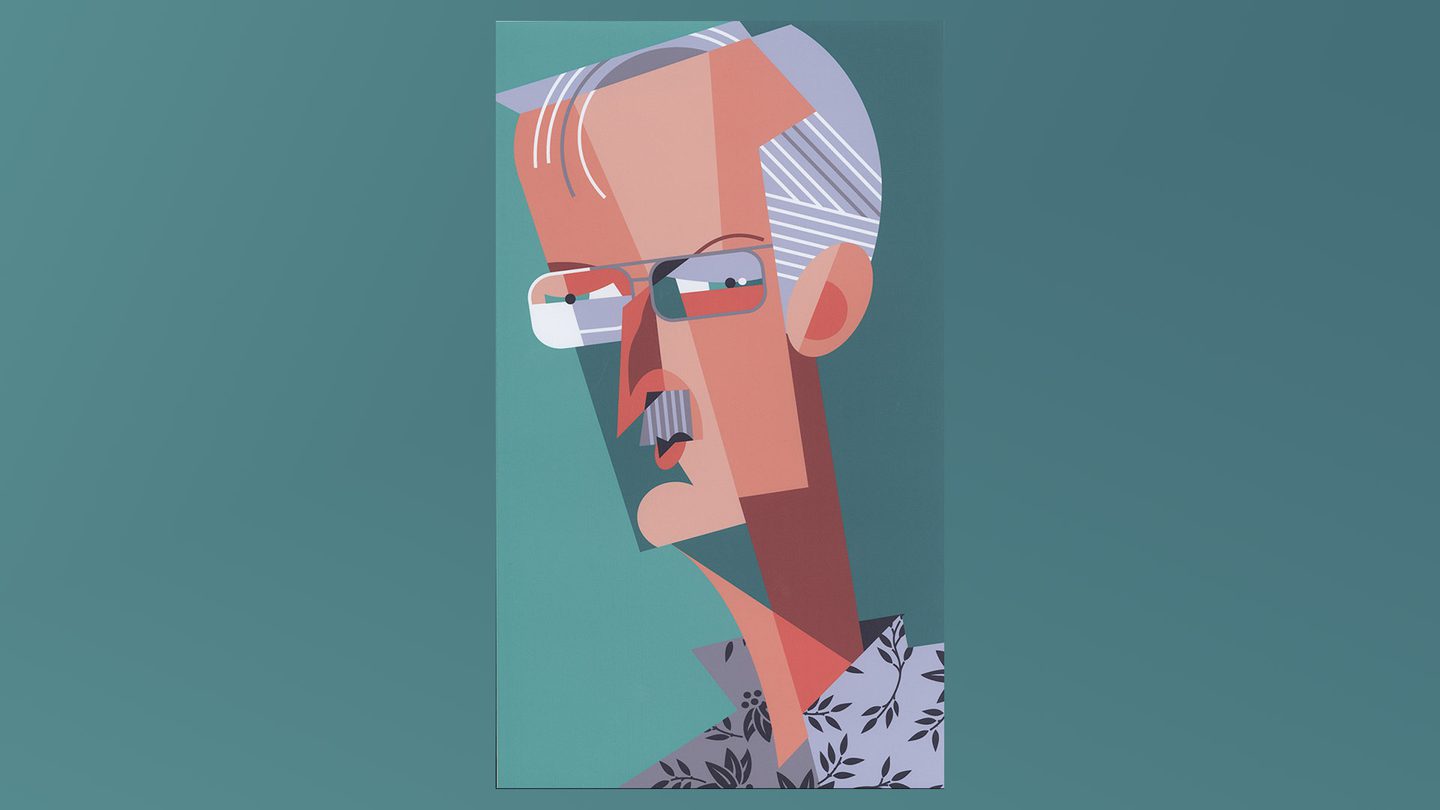
You may not be able to pick John Musker out of a lineup, but you know his work. The Little Mermaid, Aladdin, and Moana—and other Disney animations beloved by critics and audiences—were co-written and co-directed by Musker.
Musker retired from Disney in 2018, but his work as writer, producer, director, and animator continues on, most recently with his Oscar-shortlisted animated short I’m Hip (2023).
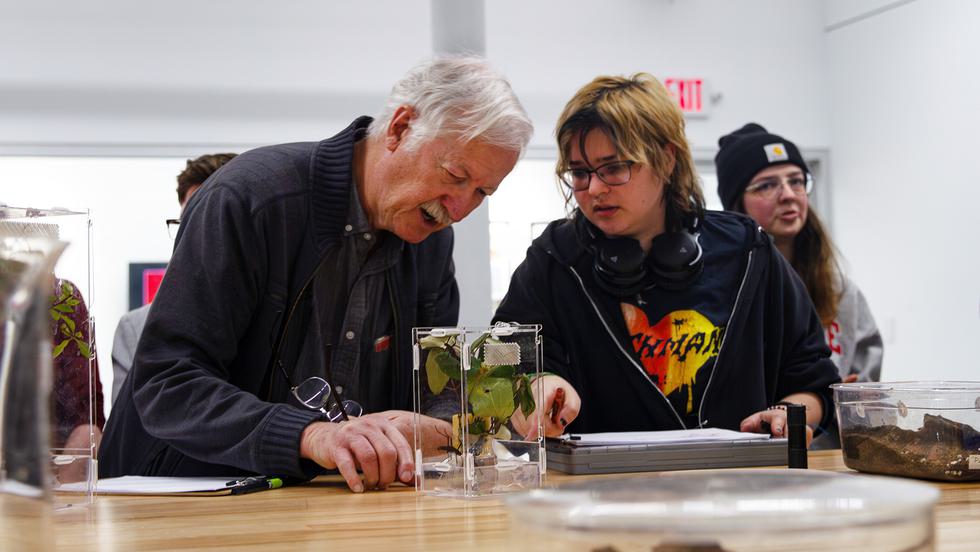
Musker has had the kind of career and global impact that many dream of. Luckily, he’s no gatekeeper—and neither is Columbus College of Art & Design, where he visited to screen I’m Hip for a sold-out audience, draw alongside CCAD students at CCAD Sketch, and join CCAD Animation Professor and Chair Charlotte Belland to talk animation and technology with WOSU Public Media.
Now we’re sharing tips from John Musker’s career highlights (and pitfalls) from the man himself. If you’re an aspiring animator, animation director, or someone who just wants to know, “How did you get that awesome job?” read on.
Begin by building a portfolio to impress your prospective animation employers.
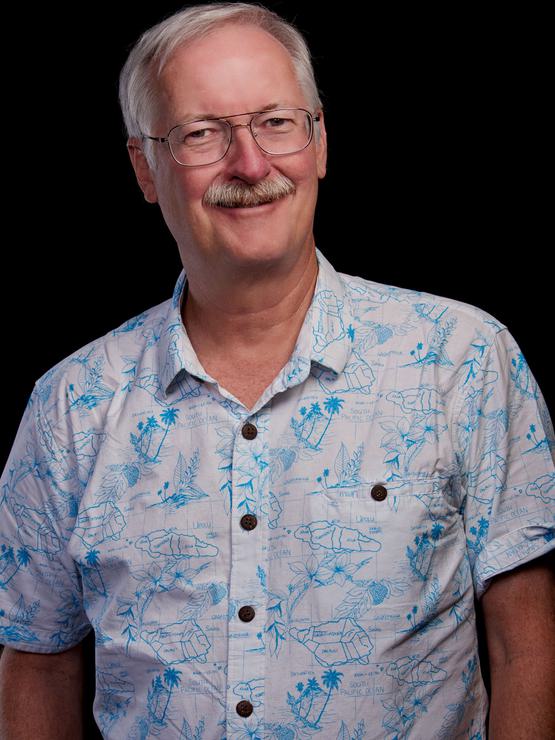
Musker majored in English at Northwestern University—“even though I thought I was going to go into some sort of cartooning,” he recalls. He studied drawing and art history, was a cartoonist for the school’s newspaper, and had his first whack at a Disney animation gig not long after graduating in 1975.
“I heard that Disney had a training program and they were looking for young animators; that all their animators were nearing their retirement age and they were really trying to get it going again,” Musker recalls. So he sent them his portfolio.
The submission included—at Disney’s request—animal drawings. One problem: He’d discovered that drawing zoo animals outside, in Chicago, in February, was painfully difficult.
“I was shivering, the monkeys were shivering,” Musker says. So he headed inside to instead draw taxidermied animals at the nearby Field Museum.
“I drew them, put them in the portfolio, and sent them off to Disney,” Musker says. “I got a letter back in a couple of weeks, rejecting me. They said I didn’t draw well.”
The issue? “In particular, the complaint was that my animal drawings were too stiff,” he recalls with a chuckle.
Of course, that initial rejection wasn’t the end of Musker’s Disney tale. And these days, he is quick to offer advice to aspiring animators hoping to follow in his footsteps—without his initial stumble.
John Musker shares his hard-earned portfolio advice with CCAD students.
Musker says a portfolio “is the most important thing” when applying for an animation gig.
More specifically, Musker advises:
A portfolio should demonstrate original work, not your renderings of existing characters.
It’s better to have fewer pieces (that are good) in a portfolio than “a lot of stuff.”
When building a visual development or character design portfolio, you should consider questions like, “Do you want to impress people that you’re a stylist who works a certain way? Or do you want to show them ‘I’m a person of many styles?’” Generally, says Musker, “I think it’s better to have a range of things you can do, rather than one narrow thing.”
Finally, dig around to learn more about studios’ specific submissions process. “You may do a little detective work to find out, you know, how does it work, how many people are on the review board … just to know what you’re heading into,” says Musker.
Launch your career in cartoons and animation by attending art school
Disney reached out to Musker a few weeks after the initial rejection with a suggestion that he apply to a new character animation program at California Institute of the Arts (CalArts). Musker did just that—and that decision was pivotal to his career success.
After all, there’s no place like an art and design college (like CCAD!) to hone your animation skills, prepare you for the career you want, and make invaluable career connections.
The members of CalArts’ inaugural class “became my life, my friends,” Musker says.
That first class included Brad Bird (The Iron Giant, The Incredibles, Ratatouille), Tim Burton (Pee-wee's Big Adventure, Batman, Wednesday), Michael Giaimo (Pocahontas, Frozen, Frozen II), John Lasseter (Skydance Animation, Pixar Animation, Walt Disney Animation), Jerry Rees (Brave Little Toaster, Tron, Space Jam), and Henry Selick (The Nightmare Before Christmas, James and the Giant Peach, Coraline).
“I worked at Disney with many of them, and I’ve remained friends with many of them,” Musker says.
Art and design colleges offer important instruction for aspiring animators in courses covering animation techniques, storytelling, character design, and other necessary skills.
At CalArts, Musker says, “I got to specialize in things I couldn’t get at Northwestern. We did a few years’ worth of figure drawing there.”
That included learning from folks like Disney story artist Elmer Plummer, who would tell the students, “we’re going to draw from the ‘bone file” today,” before pulling out a skeleton for them to draw, Musker says. “That was useful for animation in terms of knowing how things move, what's flexible and what's not so flexible.”
Two years and one Disney summer internship later, Musker graduated, with a Disney job offer in hand.
Get support in your animation career with the help of a mentor.
College is a place of formal instruction, but career success requires building on that educational scaffolding through real-world, practical experience and professional relationships.
Eric Larson, one of Disney’s “Nine Old Men,” played an instrumental role in Musker’s career development, beginning with his first work as an animator on The Fox and the Hound (1981).
“Eric would literally put a drawing down, put a piece of paper over it, and then put another over that and show you specifically how you could communicate something better. It’s a craft that’s passed on. You couldn’t learn some of it otherwise, without the one-on-one thing with someone who had done it for 20 or 30 years. Their experience guides you,” Musker told Entertainment Weekly.
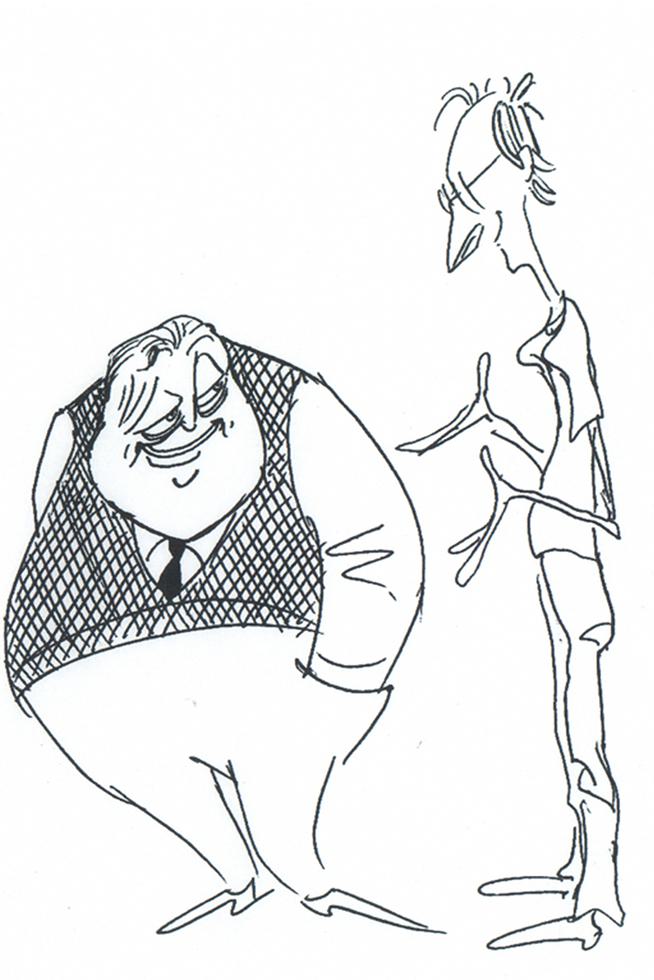
“He was the guy who taught me animation. … He worked at Disney for 50 years, and he really was an enormous part of the studio,” says Musker, who dedicated I’m Hip to Larson.
Excel in the animation industry by working well with others and being open to learning.
Being a good collaborator and playing well with others are important practices for those who want to succeed in animation, Musker says.
“Generally speaking, all those basic work things—being reliable, on time, being articulate, listening to other people, executing ideas, sharing ideas—all of those are valuable skills to have, and are skills you can work on,” he says.
Like athletes, artists and designers who want to stay at the top of their game must practice and remain flexible. That means maintaining—and updating—your animation skills.
Musker transitioned to the director’s chair at Disney relatively quickly, but through the decades he continued to take art classes to hone his skills in drawing classes. Life drawing was considered a necessary skill at Disney, he says.
“You might ask, ‘What’s the point, if you’re drawing cartoon characters?’ But really, life drawing is the foundation of so much. You’re putting an idea of a figure in space, trying to get proportion, to get attitude, to get all that,” says Musker. “I can’t recommend it highly enough, that you really spend hours every week doing figure drawing.”
Musker’s career spanned a major transition as the animation industry moved from hand-painted cels to work on computers.
And yet, notes Slash Film writerJosh Spiegel, with Moana, Musker and his longtime collaborator, Ron Clements, “made the transition to the cutting-edge style of computer animation with ease.”
“From the opening scene, in which a toddler Moana interacts with the surprisingly playful waters of the ocean, it's clear that Musker and Clements weren't going to have any major hiccups in working in computer animation,” writes Spiegel.
Musker’s willingness to maintain and build on his industry skills has paid off. He self-financed I’m Hip, and, while working with freelancers, took on a span of tasks on the project, from drawing the initial storyboards to creating the final animation.
He’d initially considered doing the whole thing on paper, like the old days, but it took only a few drawings to realize, “I didn’t like the way they looked,” he says.
So Musker went digital, using the app TVPaint on his Cintiq tablet. TVPaint allows for more expressive lines, among other benefits. “It was much better. ... It was wonderful,” Musker recalls.
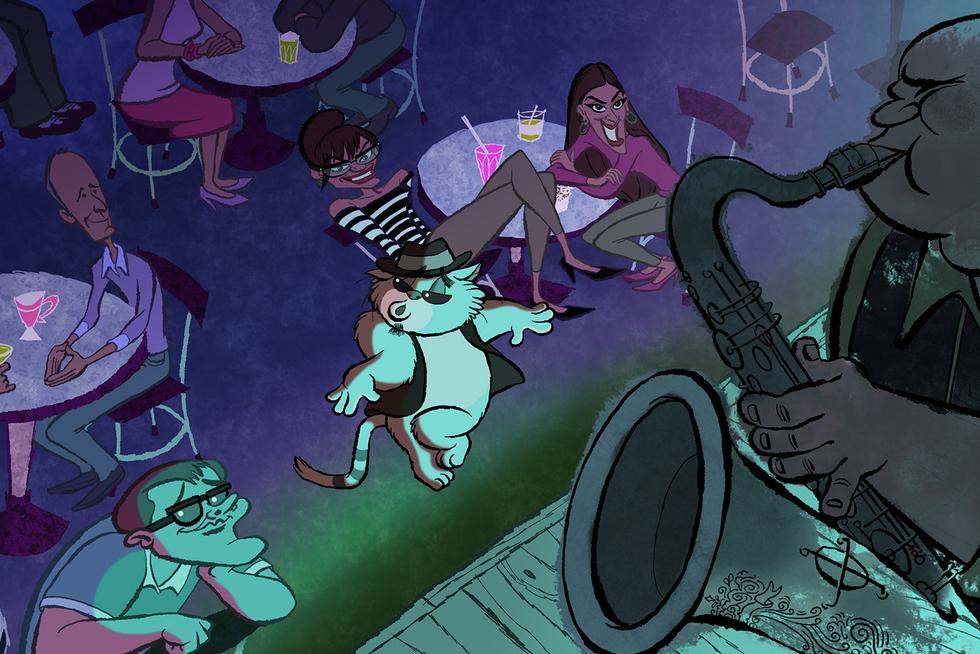
To succeed in animation, get used to hearing “no.”
In the field of animation, the name John Musker is synonymous with greatness,” says Spanish journalist Rocio Ayuso.
Musker is considered one of the best in animation, but as his early experience demonstrates, breaking into the industry is no easy task. And that first portfolio rejection from Disney wasn’t Musker’s last “no”—at Disney, or elsewhere.
The lesson: Don’t let rejection or setbacks take you off your path.
Early on at Disney, Musker and Clements were working as story artists on The Black Cauldron (1985) when they found themselves as the odd men out on the production.
“The other directors didn't like what we did, so we were sort of banished from that movie,” Musker says. As a result of their “banishment,” they transitioned to working on The Great Mouse Detective—which became a surprise critical and commercial success for Disney.

Even The Little Mermaid started with a no. Disney execs Michael Eisner and Jeffrey Katzenberg turned down the project at one of their notorious department-wide pitch meetings. The studio was planning a sequel to the Tom Hanks-Darryl Hannah hit Splash and thought two mermaid movies was one too many.
Fortunately, Eisner and Katzenberg came around, and The Little Mermaid, which was co-written and co-directed by Musker and Clements, became Disney’s biggest success in decades.
The nos happen less frequently these days. But they still happen.
For instance, in 2021, Musker and Clements were tapped to produce (and possibly direct) a DC superhero film for Warner Animation Group, reported The Hollywood Reporter and other outlets. However, the studio “didn’t like what we were doing,” says Musker.
“Persistence is important,” Musker says. “Every path to your destination has its ups and downs. So try to ride that wave a little and don’t get too caught up in it.”
Creative collaboration like the partnership between John Musker and Ron Clements is transformative, in animation and elsewhere.
In animation, as in many fields, teamwork is key to long- and short-term success. And the Musker-Clements partnership has been a particularly fruitful one, launching what’s known as the “Disney Renaissance,” a decade of creative and commercial success.
Musker jokes, “My wife, Gale, I’ve been married to her for 44 years, but I was married to Ron for, like, 36 years.”
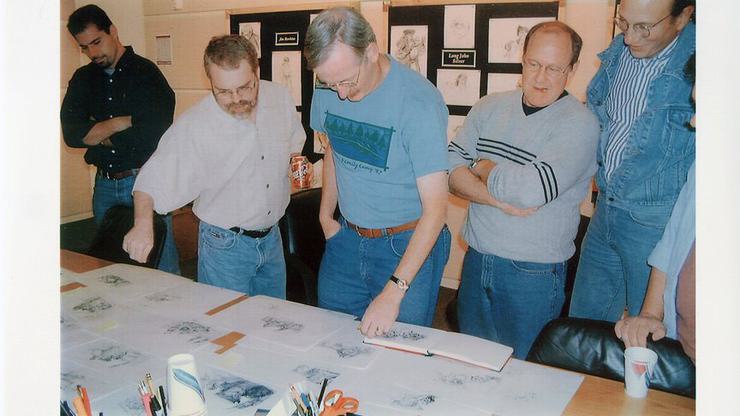
Musker and Clements have a lot in common—they’re close in age, native Midwesterners, raised Catholic—but their differences complement each other.
“We each have slightly different strengths and approaches,” Musker told Animated Views.
“Ron is more structure-oriented and makes sure that the overall story doesn’t disintegrate during the course of too many rewrites. I tend to be more concerned with specific details and gags. We constantly go over each other’s scenes and drafts and add new ideas and suggestions in the process.”
As a critic with Collider puts it, “John Musker and Ron Clements are among the greatest directors in the history of Disney animation.”
Why? Well, The Great Mouse Detective, Musker and Clement’s debuts as co-directors and co-writers, is credited with keeping Disney afloat—and still in the animation biz—after The Black Cauldron nearly bankrupted it.
Then came The Little Mermaid.
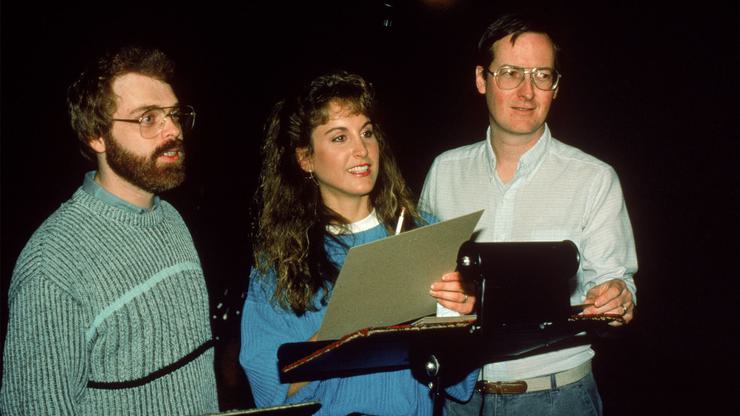
“Ron came to me and said, ‘you know, we worked well together on the Mouse Detective. Would you like to write the script with me?’ And I said, yes, I would,” Musker recalls. “So, we worked together on that, and they loved the script. We worked together on the production, and we were a team after that, writing and directing together.”
The Little Mermaid, released in 1989, “did OK,” says Musker, jokingly understating the movie’s impact. (It grossed over $100 million at the U.S. box office upon its initial release, won two Academy Awards, and, in 2022, was selected for preservation in the National Film Registry by the Library of Congress.)
The Little Mermaid was followed by Musker-Clements collaborations, on such movies as Aladdin (1992), Disney’s first animated work to draw more than $200 million at the box office; Hercules (1997) and Treasure Planet (2002), which were both critical successes but less popular with audiences; The Princess and the Frog (2009), a critically and commercially successful return to hand-drawn animation at Disney; and Moana (2016), a hit with audiences that was nominated for two Oscars.
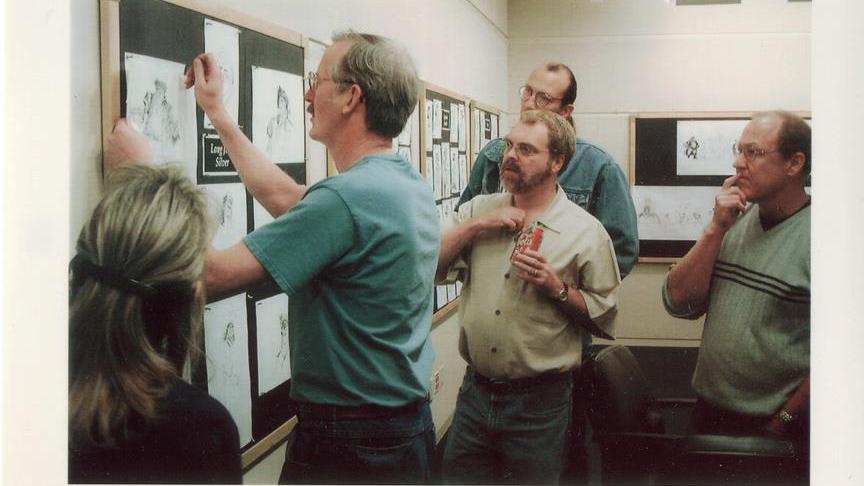
John Musker was inspired to create Moana after taking a deep dive into Polynesian mythology.
Musker found inspiration for Moana in the landscapes of the artist Paul Gauguin, in the mythology around the character of Maui, and the “Long Pause,” a 1,000-year period in history in which Pacific Islanders, who had been proficient navigators halted their oceanic expansion.
John Lasseter, then head of Disney Animation, directed the duo to head to the Pacific, to Fiji, Samoa, and Tahiti, to understand the geography and connect with experts—linguists, archeologists and navigators. What they learned prompted them to expand the role of the movie’s heroine and dig deeper into Polynesian history and heritage.
“We came back sort of transformed from our experience in the islands and we threw out our story that we had before,” Musker told The Daily Northwestern. “We kept Maui, but we really reinvented (the story) and built it around navigation, because we learned about (the islanders’) pride being the world’s greatest and first navigators.”
Moana had a resounding impact, taking in more than $687 million at the box office on its release, and maintaining its popularity over the years. In 2023, seven years after Moana’s premiere, it was the most-streamed movie on Disney+, said Disney’s head Bob Iger in early 2024, announcing a sequel would debut later the same year.
Getting to the top of the animation industry—but not stopping there.
Moana was Musker and Clements’ final Disney feature together before Musker retired from the House of the Mouse in 2018.
Slash Film’s Spiegel calls Musker one of the “great artists” to affect major change at Disney, noting that his retirement from the studio would be “keenly felt for a long time.”
Musker at Dreams Come True: Art of the Classic Fairy Tales from the Walt Disney Studio at the New Orleans Museum of Art.
In 2019, Musker and Clements were given the Winsor McCay Award for their lifetime contributions to animation.
Those contributions are not yet over, as evidenced by Musker projects like I’m Hip, a four-minute musical joyride that nods to pop culture and retro animation styles.
Although he did much of the work himself, Musker also tapped into his numerous industry connections to help with clean-up, layout, effects, and more for work on I’m Hip. Those individuals are among the more than 120 cameos you can catch in the short, alongside glimpses of Musker’s family, friends, and animation colleagues.

Musker says his next project will be a self-published book of caricatures—he’s created thousands over the years.
Plus, he’s chewing on possibilities for another short film. “There are multiple ideas, and I haven’t zeroed in on which I’d like to do,” Musker says.
And there may be at least one more Musker-Clements collaboration to come. “We have another script that we’ve written, that may or may not happen, so who knows,” he says.
I say, ‘As long as I can think, see, and draw, I think I can do a film,’” says Musker.
Learn more about CCAD’s bachelor’s degree in Animation, or apply here.
